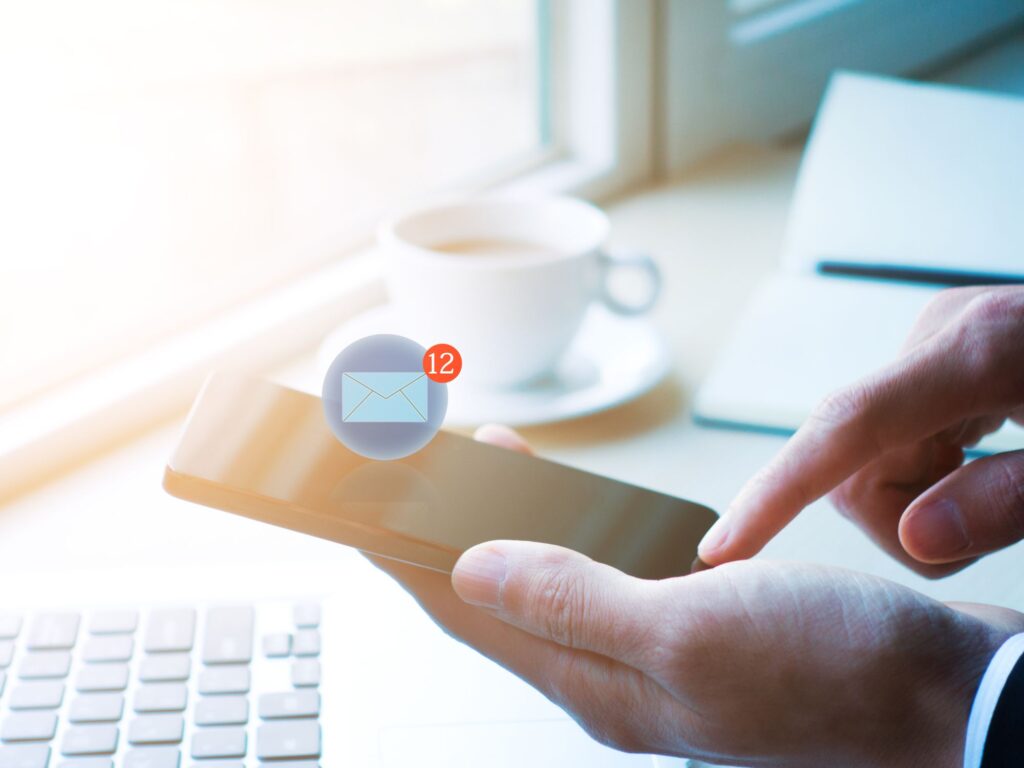Email marketing is still one of the most effective marketing strategies today. Just open your own inbox and you’ll see. How many newsletters, special promotions, and other mass mailing letters do you receive regularly?
If you’re like me, quite a few, but that’s okay! Why? Because I’ve signed up for all of them, and I do actually like reading them. The content provides value, information, and entertainment to me.
Use Email Marketing in Your Business
Seeing that most people do opt-in for the email newsletters they wish to receive, this is a great “in” for you as a business owner to start adding value to your customer’s lives. They’ve already said “Yes, I want to hear from you!”, so don’t feel that if you write an email newsletter, you’re somehow intruding or “selling”.
Now, for good email marketing to work, and to maximize the full potential of online marketing for your product or service, you do need to be adding value in your communications. And this is a bit trickier than it sounds.
8 Tips for Effective Email Marketing

1. Prove that you truly Care
You shouldn’t do direct selling on your email content right away because this might trigger an adverse reaction from some of your potential customers.
The best way to handle content in your email is to provide to your readers a piece of information which you think they might need or use, whether this data is directly related to your own product or not.
You could share a message of quality, some information your readers can use, a piece of updated news or even just a list of events or places where they can spend some of their recreational time. These are just a few great examples of content writing which will provide value to your reader’s day in exchange for their time.
2. Use the 90-10 Rule
Copywriting experts recommend the 90-10 rule for writing your business email which means that 90% of your email you devote to content writing, while 10% you devote for promotional writing.
Some content writers will argue that content and promotional writing are basically the same, where your content basically has a great sales pitch in its message already, one that makes a reader read a blog or to post feedback, click on a link and make a decision. But I personally find those hard to craft, so knowing that I can weave in an offer for 10% of my email without sounding like too much of a sales pitch, that works for me!
On the note of “sales” though, always remember, that helping a potential customer make an educated purchase decision is not sales, it’s service. Also remember that sharing more information about your product or service doesn’t mean you’re devaluing your readers time or energy. It only means that you are willing to offer to your customers information about exactly what they want to see and read.
3. Become Personable

Adding value to your email marketing is all about getting more people to know you better which makes them curious to get to know your own product and service more (how’s that for a sales pitch!). Sharing your best insights may indeed be better than directly selling your product or service through email. It might eventually get you a higher conversion rate. And the art of sharing is really the art of building a business relationship up close and personal.
According to W. Jeffrey Rice, Senior Research Analyst, MECLABS, by treating customers as not customers but as people and nurturing relationships with them, marketers are able to get past many stumbling blocks of selling their products. In fact, many marketers report that the most actively buying people they have in their client list are the ones they have built relationships with.
4. Acknowledge Healthy Skepticism
Rice also affirmed that healthy skepticism must be encouraged and must be viewed as part of ethical customer engagement. Customers have been inundated with so much spam in their emails in the past that it only makes sense that what looks like too much of a commercial message might get seen as being irrelevant very quickly.
5. Ask for Comments and Feedback
Ever feel like you’re sending your email marketing campaigns “out into the void” and you literally hear nothing back? You can easily solve this.
In your email newsletters, make sure you have some engaging content, like a link to a blog post, an event listing, or a link to something of the “latest and greatest” that happened on your social media channels. When your readers have consumed the information, simply ask for feedback on it. Say something like: “What do you think? Leave your comments on our blog!”
6. Include Downloads and Freebies

If you’d like your readers to start loving receiving your emails, make sure you include downloads, coupons or freebies. Receiving something for free ALWAYS leaves the reader feeling like they got something in return for their time, for giving you their email address, for allowing you to communicate with them. Whenever you can, include a special rate, extra ticket, or exclusive deal.
7. Automate Conversions
In the event that there is something for sale in your emails, make the conversion of that sale automatic. Link to an online store, an online booking system, a Paypal page where people can buy, and they can buy NOW. This not only makes your workload easier, it also helps make the reader feel in control. Whether it’s 10 pm at night or 4 am in the morning, any time they are ready to consume your sales letter, they should also be able to follow through with a purchase or booking.
8. Stay Focused
Last but not least, if your newsletter features too many topics and looks more like a newspaper, the chance of people actually consuming it go down rapidly. Use one topic at a time and focus your efforts on it. That way, people can quickly and conveniently consume what you are offering.
If it does make sense for you to have different topics and sections in your monthly newsletter, make sure you use clear headings, blocks or otherwise identifiable areas of content so that “skim-readers” can quickly learn and know where to go for the information they actually do want. Chances are seriously really high that nobody, ever, reads everything you write in your newsletters.
How do you do email marketing?
What do you think? How do you do email marketing and what is working for you? Leave me your comments in the comment section below!